
Green oasis of well-being thanks to houseplants
Now that it's getting cold and the days are getting shorter, it's the perfect time to cosy up your four walls. With houseplants, you not only create cosy corners to chill out in, but you also do something for a good indoor climate. I'll show you how to create a cosy oasis and what you should look out for when buying and caring for houseplants.
Choosing the houseplant
The epitome of all houseplants is, how could it be otherwise, the palm tree! It's not just outside on the patio that it invites you to enjoy a cosy get-together. The palm tree is also very popular indoors. My personal favourite is the Kentia palm. It is very robust, doesn't need quite as much light as the other indoor palms and is forgiving of minor care mistakes. With its long, curved palm fronds, it is very decorative and conjures up an exotic atmosphere in your living room. The Kentia is slightly more expensive to buy than the very similar Areca palm. However, it is much more robust and durable and can cope with surprisingly little light.
Leafy plants for a shady location
In general, there are some houseplants that thrive even in a less than ideal location. You just need to know what shady means and which plants feel comfortable in this location.
A shady location is a place that is far away from the window, depending on the brightness and size of the room. Rooms with morning sun tend to be a little darker and shadier than rooms with midday and evening sun. The following rule of thumb applies: the further away a plant is from the window, the darker the location and the less water it needs.
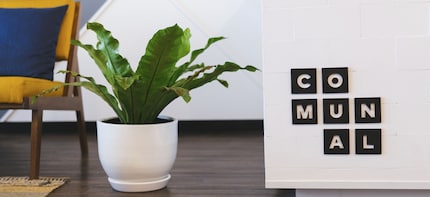
Vessel with indoor plant
Here are some plants that are well suited to a slightly darker location:
- Dragon tree species (Dracaena marginata, Drac. deremenis, Drac. fragrans)
- Various Dieffenbachia species (the lighter the colour, the more light it needs)
- Ficus for shady locations (Ficus longifolia)
- Violin fig (Ficus lyrata)
- Rubber tree (Ficus elastica)
- Window leaf (Monstera deliciosa)
- Various Philodendron species
- Ivy (Scindapsus pictus)
- Indoor aralia (Fatsia japonica)
- Aglaonema commuatium
- Schefflera actinophylla
- Bow hemp (Sansevieria trifasciata)
- Ivy (Heder helix)
- Monocot (Spatiphyllum)
In a room with no natural light source, it's best to get a plant light. Or stage a flowering plant that is currently in season. But be careful, not all flowering plants are suitable. The various types of bromeliads or a beautifully decorated amaryllis plant are a good choice.
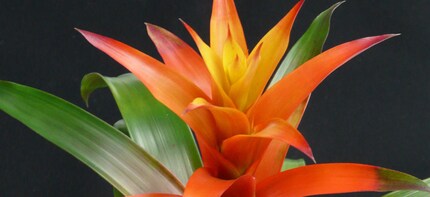
Bromeliad plant
Cacti and succulents for sunny locations
A very sunny and exposed south-facing window in your home is the ideal location for cacti and succulents. They love warmth and sun. The best way to organise a cactus window is with different species. Cacti and succulents are plants that usually grow in steppes and deserts and require very little water. A typical feature of succulents is their thickened leaves, in which they store water to survive long periods of drought and dry spells. Therefore, make sure that you water them little.
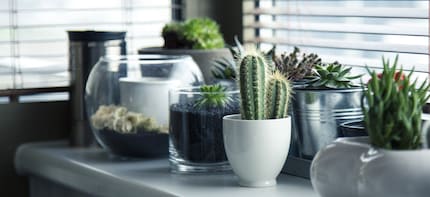
Cactus window
How to create accents with flowering plants
With flowering houseplants and a matching planter and a little imagination, you can create wonderful colour themes. One of the best-known and most popular flowering plants for the living room is the Phalaenopsis orchid. With its elegant flower panicles and long flowering period, you will enjoy it for a long time. In summer, it is best placed by a window with morning sun. This corresponds to a semi-shaded position. With a little care and sun protection (curtains or blinds in front of the window), a south-facing window is also possible. In winter, it should be as bright as possible. If it is placed on the windowsill above a heater, you should make sure that you water it more often. When watering, take the orchid out of the planter. Then immerse it in a bucket of water and allow it to drain well. Fertilise with an orchid fertiliser every 14 days in summer.
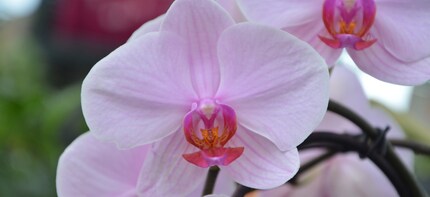
Pink-coloured Phalaenopsis orchid
Flowering plants in the living room
When it comes to flowering plants, there is an incredibly diverse range of flower colours and shapes. Arranged in a matching decorative pot or planter, they are great eye-catchers that will brighten up any home. Flowering plants always need plenty of light to bloom beautifully and for a long time. Some plants, such as ferns or orchids, need high humidity and a bright location. Others, however, are desert dwellers and like it dry and bright.
Some current and easy-care flowering plants for the living area:
- Azaleas
- Poinsettias (care instructions)
- Anthurium (flamingo flowers)
- Bromeliads
- Kalanchoe
- Begonia
- Various orchid species
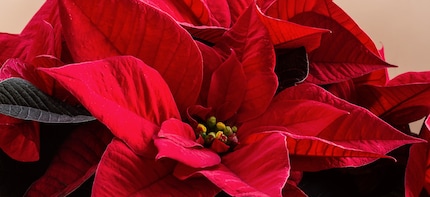
Poinsettia
Exotic and carnivorous houseplants
Are you a fan of exotic plants and have a conservatory? Here you have almost unlimited possibilities and can create a true green paradise. The Medinilla is ideal for this. It is a beautiful exotic plant whose huge clusters of flowers will delight you. With a bit of flair and a green touch, the medinilla is a real gem among exotic plants.
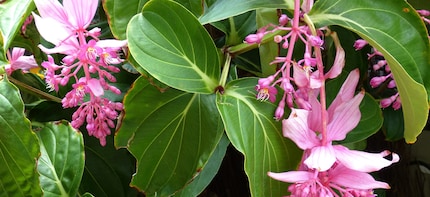
Medinilla plant
Or do you prefer something a little more unusual? Then how about carnivorous houseplants? Not easy to obtain, but very exciting to keep. It's best to plant the carnivorous plants in a glass container, similar to a terrarium, or in a self-contained flower window. Carnivorous plants require very high humidity.
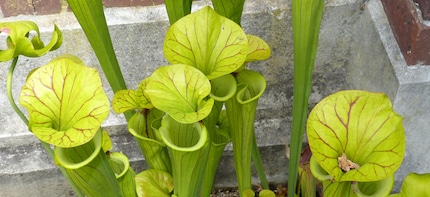
Carnivorous plants
Tips and tricks for the plant
Since you can't always create optimal conditions for plants in your living room, it can happen that houseplants don't always grow as desired. It can happen that your plants develop diseases and pests due to sub-optimal light and water conditions. But don't panic! With a few tips and tricks, you can usually save the plant and restore the optimum conditions. If you have any questions, feel free to write to me in the comments section below. I will then try to answer your questions. A picture of the plant and its current location is very helpful.
So, now I wish you lots of fun designing and enjoying your green oasis!
I discovered my love for gardening very early on and later turned my passion into my profession. For a few years now, I’ve been regularly writing blog posts and publishing articles in the HomeGardening section of myPfadFinder.com. This is where I give readers tips and tricks on gardens and balconies and present my latest gardening videos.
Find out more about me here: <a href="http://www.andreas-homegardening.com/" target="_blank">www.andreas-homegardening.com</a>
From the latest iPhone to the return of 80s fashion. The editorial team will help you make sense of it all.
Show all